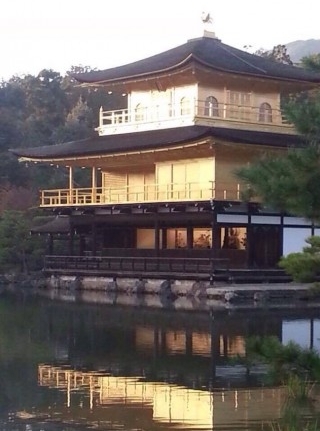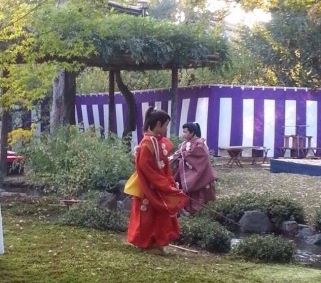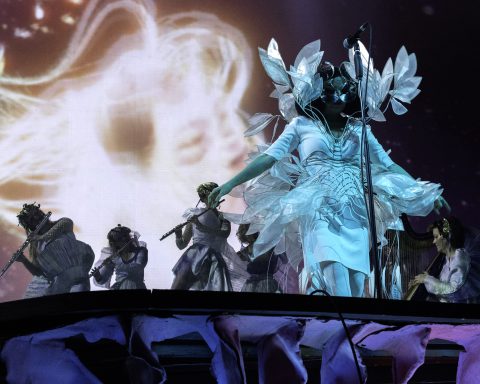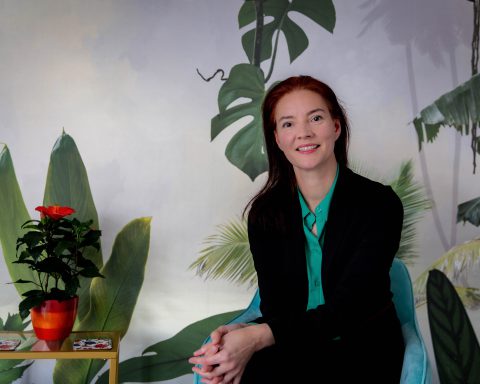I have for long dreamed of going to Japan to enjoy its beauty.
Some years ago, I attended the XVIII Congress of the International Sociological Association in Yokohama, followed by a joint Japanese-American conference in Tokyo and Kyoto. This was my very first visit to Japan, regularly punctuated by the frustration of not being able to sightsee more.
So now I am back to drink myself on beauty. This beauty is mostly quiet, as in the grey-brown of the old temples. But it can be screaming too, as in the red lacquered Otoris, or shrines.
I am mad about both. In particular, the color red drives me crazy with desire. I cannot photograph it enough. More about red later. But, this I have to share now – this week I saw the Silver and the Golden Pavilion in Kyoto. Indescribable.
So I came to Japan to admire objects, but while exploring the world of things, I discovered Japanese kindness and graciousness.

Often a complete stranger accompanies me to my tourist destination or waits to make sure that I am going in the right direction.
This could be because these strangers are afraid their English is insufficient to explain things well – that was an explanation offered by a Japanologist from Leipzig. Or it could be “white privilege” – that would be a thesis supplied by a PhD originally from Dresden, working on this topic in Hong Kong.
But I really don’t think so.
The Super Typhoon Lan broke my umbrella one evening in Tokyo. As I stood in the dark struggling to make do with it, a young man all of a sudden appeared from a restaurant with an umbrella and offered it to me. Imagine! I was shocked and had to be re-assured that it was a gift.
Just the other day here in Kyoto, a young woman ran to the next bus stop (admittedly not very far away, but still) to tell the driver to wait for me. In an Udon place next to Don Quijote, where I frequently ate in Tokyo, I was offered a plaster to protect my irritated ankle from my new Chinese rain sandals. And then, in the Maison Landemaine Tokyo in Roppongi, various waiters kindly looked up the opening hours of the National Arts Center and the best route to get there, as well as which post office had Sunday open.
While women in Japan are kind and gentle, men bark at you with the best intentions. More than once I was barked at by the (mostly) male metro personnel reigning high over entrance and exit points where you feed ticket machines. They bark but, as I discovered over time, they mean well.
Once I looked for an elevator. The man in charge commanded me back. Ferociously, he indicated he wanted my metro Penguin card. But I had already paid, I said, trying to keep my card. He took it nevertheless. Then he did something with it and indicated I should use the other entrance.
Only when I reached it, did I understand what he, in his logical and kind thinking, had done. He cancelled the money already charged to my Penguin card so that I would not pay double when I entered again near the elevator.
Perhaps the most surprising, though, is the generosity with which the lawyers I interview here offer me their time and their contacts. An average interview in Germany or Hong Kong takes a bit over an hour. Here many lawyers take 3.5 hours, during which everything I could use in my research is explained in great detail, often relying on Google, brochures, or their own PowerPoints for greater precision. The snowball method does wonders here.
But beware of Japanese mothers and housewives: Before you know it, they spot your helplessness, adopt you and run your life.
On several occasions in the Tokyo metro, I was approached with an offer to help me find the place I was looking for. As I learned after a few such encounters, a standard “catch-the-tourist” dialogue establishing the protectorate, monopoly and control over the catch starts with “Where are you going? I help you?“ This is followed by: “I will show you, I am going in this direction anyhow.” Alternatively, this might be: “I live around here, I will show you.”
The first time I was caught in Japan, it was by an elegant middle-aged lady. The place of action was a humongous train, metro, shopping and food center called Shinjuku. I needed the east exit, where my host-prof was waiting for me in a cafe, while we were standing facing the southeast exit.
After successfully shaking off another dame who also wanted to show me the way and became involved in an argument about how best to proceed, the volunteer guide spent half an hour (I am not kidding) looking for the east exit. Do I need to mention that I was very very late?
The catch-22 is that out of politeness you – the catch – do not try to escape your imprisonment in Japan. At least not at first.

The third or fourth time around happened in Kyoto, when I was on a bus to a temple which once a year opens its gates to everybody who wants to see a reenactment of an old ceremony. During the actual ceremony, aristocrats in need of an antidote to ennui sat near a meandering stream of water, writing poems. If they were quick enough and finished before sake floated by, they could drink it and reign victorious over their competitors.
Well, I very much wanted to see the reenactment, which I hoped would be repeated a few times in the course of the day. An elderly lady, walking with a stick, offered to show me how to get from the bus stop to the temple. I was touched. But as we reached the street lights and waited for them to change (takes forever in Japan!!!), I saw larger groups of people coming in our direction.
This alarmed me a bit. My volunteer guide waved her stick in their direction, saying that we did not have much left to walk, the temple was over there. As we moved in a walking stick-tempo, I asked and a couple of tourists told me that things were sort of winding down.
Now, that was the last drop. Apologetically screaming “Sorry, sorry, sorry,” I broke lose and caught the very closing minutes of the show: Two monks were chanting prayers on a green field, while regular mortals, standing in a long line, were – one after another – putting sheets of white prayer- and wish-paper on the water.
Two kids dressed in kimonos, their hair done for the occasion, were securing their safe passage on the meandering stream with two long sticks. Nearby, a couple of monks and orderlies, both dressed in long white dresses, guarded over the spiritual and physical security of all present. While the first wore pointed black platform shoes (very high and open in the back), the others wore galoshes.
The entire scene basked in the sunshine and the scent of flowers.
But I got off the subject. The other day in Kyoto, I was caught off guard. I asked a young woman walking her dog how to get to the Philosopher’s Walk and the Silver Pavilion in the Ginkakuji Temple. She first said she would point out the bus I needed. Then – she had already taken hold of my map, without which I was even more helpless than before – she said she would walk me there, since she lives around the corner.

At this point my alarm bells should have gone off, but they did not. She was very amiable. Her English was hesitant, but we actually could have some conversation. So engrossed did I become in it that I did not notice that we passed all possible bus stops and were already walking up in a rash dog-walking tempo.
We both broke into sweat. It was an unusually hot day for this time of the year, and she had a coat and a cap on. I managed to convince her to stop and take these off. I still had stockings on.
We turned right, then left and sweated some more, now speedily moving uphill. Then we entered the actual Philosopher’s Walk. There was a big sign.
No doubt about it. I was captured, adopted and my life was being run.
As the name itself suggests, the Philosopher’s Walk is meant for a meditative relaxed stroll along a stream adorned by trees meant to be admired. Well, once she slowed down and pointed out a set of trees that should be photographed. I obediently took a photo, but also wanted to take one of her. She was so shy she bent down to her beloved dog for protection and company.

She also kindly inquired in a cafe whether I could hide in the bathroom to take off the stockings. But otherwise we just kept pressing on.
Halfway through, I decided that her dog was for sure happy, and that I should be too. A slow stroll I can have everyday, but not the chance to enjoy her company and that of her beloved dog.
Once we reached my destination after, I believe, a total of two hours, I suggested we have some coffee – I was grateful for her navigating. She was startled. She looked for and could not find her purse, and was very much in a hurry to get things bought and done for dinner for her family.
So I gave her my visiting card and asked her to email me, so we could perhaps meet up before I leave Kyoto for good. This made her happy. She hugged me and said: “Does it mean we are friends? Yes, friends.”
As we parted, we turned back several times – the Japanese way – to wave goodbye to each other. That is what family and friends do in Japan.
Cover shot: Reenactment of old Japanese ceremony in Kyoto. (Photo: Helena Flam; photo editing: Ana Ribeiro)










